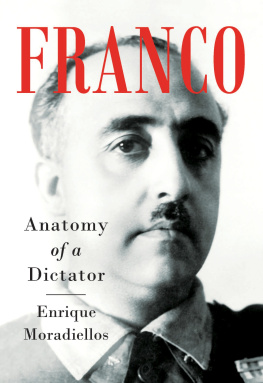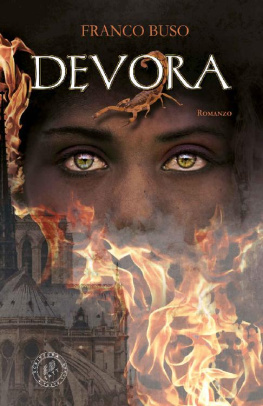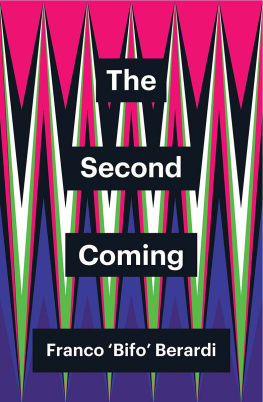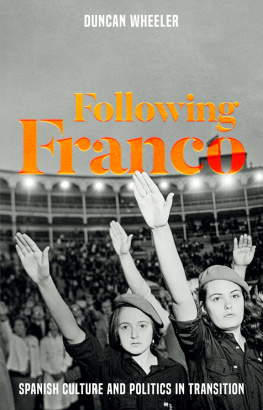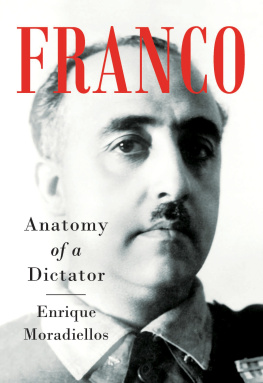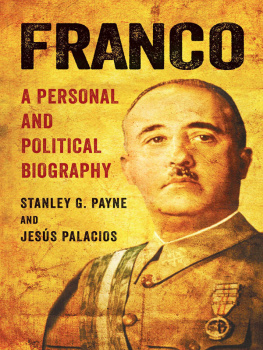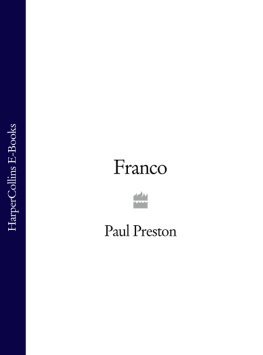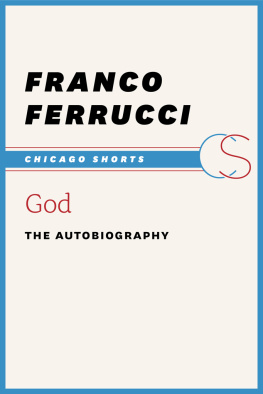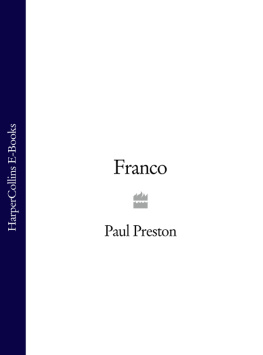Enrique Moradiellos is Professor of Modern Spanish and European History at the University of Extremadura, Spain. He has previously taught at Queen Mary, University of London and Complutense University, Madrid and is the author of ten books on twentieth-century Spain, published in Spanish. In 2017 he was awarded the Premio Nacional de Historia (National Prize for History) by the Ministry of Education of Spain.
Enrique Moradiellos is one of the most distinguished historians of twentieth-century Spain. For a concise and lucid account of Franco, the man and his dictatorship, it would be difficult to improve on his balanced and learned account.
Paul Preston, author of The Last Days of the Spanish Republic
FRANCO
Anatomy of a Dictator
Enrique Moradiellos

Published in 2018 by
I.B.Tauris & Co. Ltd
London New York
www.ibtauris.com
Copyright 2018 Enrique Moradiellos
The right of Enrique Moradiellos to be identified as the author of this work has been asserted by the author in accordance with the Copyright, Designs and Patents Act 1988.
All rights reserved. Except for brief quotations in a review, this book, or any part thereof, may not be reproduced, stored in or introduced into a retrieval system, or transmitted, in any form or by any means, electronic, mechanical, photocopying, recording or otherwise, without the prior written permission of the publisher.
References to websites were correct at the time of writing.
Every attempt has been made to gain permission for the use of images in this book. Any omissions will be rectified in future editions.
ISBN: 978 1 78453 942 9
eISBN: 978 1 78672 300 0
ePDF: 978 1 78673 300 9
A full CIP record for this book is available from the British Library
A full CIP record is available from the Library of Congress
Library of Congress Catalog Card Number: available
Typeset by JCS Publishing Services Ltd
To Susana and Ins
CONTENTS
Illustrations
Stamps showing Franco in his 40s, 50s and 60s (Public domain)
Franco as a commander in the African Army, 1916 (Album / Universal Images Group / Universal History Archive)
Franco as Caudillo after the victory of 1939 (Album / Universal Images Group / Universal History Archive / UIG)
Franco and Hitler at Hendaye (on the SpanishFrench frontier), 23 October 1940 (Album / Oronoz)
Franco as Caudillo and head of state, late 1950s (Album / Granger, NYC)
Franco and his wife Carmen at a social event in the mid-1960s (Album / Universal Images Group / Universal History Archive / UIG)
Franco and Prince Juan Carlos in 1972 (Rue des Archives / Bridgeman Images / AGIP)
The front cover of a book of Francos speeches, published in 1939 (Public domain)
Postcard depicting General Franco with Long Live Spain, Italy, Germany and Portugal slogans and flags from the time of the Spanish Civil War (Public domain)
Franco on the cover of Time magazine, October 1943 (Public domain)
A 1953 coin featuring Franco (Public domain)
The cover of a book of caricatures published in Latin America (Uruguay and Argentina) in 1937 (Public domain)
The Generalissimo, a poster issued by the Madrid Defence Council (Junta de Defensa de Madrid) in late 1936 (Public domain)
Caricature of Franco published in exile in France by a Republican organisation during the 1940s (Public domain)
Map

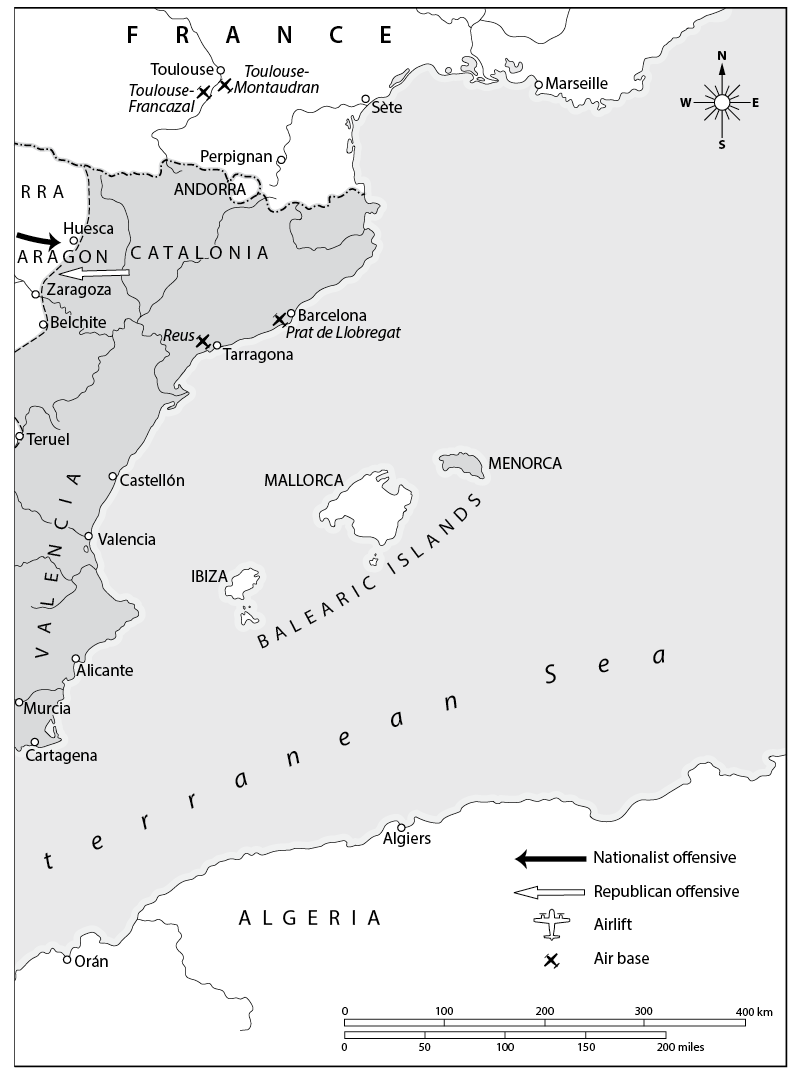
The division of Spain, August 1936. The shaded areas are those held by the government.
Introduction
FRANCO
An Uncomfortable Spectre from the Past
A little over 40 years ago, on 20 November 1975, General Francisco Franco Bahamonde died of natural causes in Madrid, just as he was about to celebrate his eighty-third birthday. For almost 40 years, from 1 October 1936, he had been the Caudillo, the head of the dictatorial regime of Spain. This book is an introduction to his personality, his activities as a political ruler and the nature of the institutional regime that he established and led until his death.
In the public memory of Spaniards and of European and international contemporaries, Franco was above all the Caudillo of Spain by the grace of God. So read the inscription on the back of all Spanish coins minted since December 1946, approved by the unanimous decision of the Plenary of the Cortes (the Spanish Parliament). This was just one of the many honours and official tributes awarded to the soldier who had born in El Ferrol in December 1892, a man who had spent the majority of his military career in the bloody colonial war in Morocco, who later revolted against the government of the Second Republic in July 1936 and won an unconditional victory in the Civil War in April 1939. He had held the titles of head of state, head of government, generalissimo of the armies, homo missus a Deo (the man sent by God) and national chief of the Falange (the one-party state), only responsible to God and history. He was, in short, the Caudillo, the supreme captain of the race, the Caesar undefeated, the saviour of the Fatherland, guardian of the Spanish Empire and sentinel of the West. He was an absolute dictator with full powers, deeply reactionary, ultra-nationalist and a Catholic fundamentalist who had assumed on 1 October 1936 all the powers of the New State and whose authority would be providential and for life. He was not merely a simple dictator, for reasons articulated with typical hyperbole by the politicized writer and poet born in Cdiz, Jos Mara Pemn:
Francisco Franco: the quiet bravery, the clear purpose in the strong will and the smile. Franco is not a dictator who presides over the triumph of a party or a section of the nation. He is the father that gathers under his command, as one big family, all the national forces of Spain. His gesture is not surly, his face is not, as Spaniards say, that of an unpleasant host. Franco excludes no one: Franco smiles and welcomes. Because under his command he has not only soldiers, Falangists or requets [militiamen]. Under his command is the whole of Spain, the sum of all it is. His watchword is integration in other words, unity. The word of Rome and of Isabel and Ferdinand; and of Charles V and Philip II. The key to our history.
A man who carried all that authority and received all that majestic flattery for almost 40 years necessarily had to be present in every manifestation of the public and social life of Spain. In the year 2000, on the occasion of the twenty-fifth anniversary of Francos death, the writer Antonio Muoz Molina recalled that Franco was the face that I saw everywhere.
The image of Franco was, of course, present on the coins, but he was also depicted on postage stamps, in the classroom to the right of the crucifix on the walls of the dependencies of all government agencies and some private individuals, in street names in Spanish towns and cities, on the No-Do (the official cinema newsreel) in black and white, then also on the television news and as imposing equestrian statues (in Madrid, Barcelona, Valencia, Ferrol, Santander, Jan and elsewhere). His name was also present, pronounced both in official speeches that ended with the threefold invocation (Franco, Franco, Franco!) and in Sunday sermons seeking divine protection for the Pope, the bishop of the diocese and our head of state, Francisco. His peculiar voice, a high-pitched monotone, was heard by radio or television audiences on many solemn and festive occasions: on 1 October, during the national holiday for the Exaltation of the Caudillo; on the corresponding Sunday in May on the occasion of the victory parade; on 18 July in commemoration of the start of the glorious national uprising; on 25 July during the tribute in Santiago de Compostela to the patron saint of Spain and, above all, on 31 December in the traditional message from His Excellency, the head of state, to the Spanish people.

